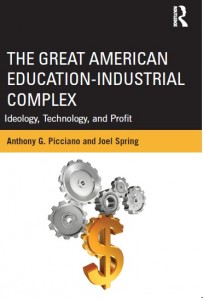Dear Commons Community,
Washington D.C. honored Rosa Parks yesterday by unveiling her statue in a permanent place in the U.S. Capitol. President Barack Obama praised her as an enduring reminder of what true leadership requires, “no matter how humble or lofty our positions.”
Parks became the first black woman to be depicted in a full-length statue in the Capitol’s Statuary Hall. A bust of another black woman, abolitionist Sojourner Truth, sits in the Capitol Visitors Center.
“We do well by placing a statue of her here,” Obama said. “But we can do no greater honor to her memory than to carry forward the power of her principle and a courage born of conviction.”
A little ways from the Capital, the U.S. Supreme Court began arguments in Shelby County v. Holder that challenges the renewal of the Voting Rights Act. The Supreme Court’s conservative justices left the impression that they were willing to repudiate Congress’s power to enforce the right to vote by striking down Section 5 of the Voting Rights Act of 1965. As reported in the New York Times:
“Section 5 of the Voting Rights Act requires nine states (seven of them in the South) and parts of seven others with records of extreme discrimination against minority voters to get approval from the Justice Department or a special court in Washington before they can make any changes in how they hold elections. Without this provision, there would be no way to prevent new and devious efforts by local officials to block blacks and Hispanics from voting or to reduce their electoral power. In 2006, Congress overwhelmingly reauthorized the statute. It found that these places should remain “covered” by this “preclearance” requirement because voting discrimination remained both tangible and more concentrated and persistent in them than in other parts of the country. House members from those places strongly supported the renewal: of 110 members from covered jurisdictions, 90 voted for reauthorization.
But critics of Section 5 — like Chief Justice John Roberts Jr. — would rather not consider the real-life effects of voting changes on minority voters in historically discriminatory areas. Instead, they frame the issue in the Shelby case as whether Congress was wrong to renew the section “under the pre-existing coverage formula.” Their claim is that Section 5 stigmatizes covered districts, so that any such decision must be based on current data about severe discrimination in that place. The chief justice raised doubts about the section’s constitutionality in a 2009 Supreme Court opinion that resolved a Texas voting case on narrower grounds. He focused on the formula used in 1965 to determine which states and other places would be covered — places that had used a forbidden test or device in November 1964, like a literacy test or a poll tax, and had less than 50 percent voter registration or turnout in the 1964 presidential election. The statute’s coverage formula, he wrote, “is based on data that is now more than 35 years old, and there is considerable evidence that it fails to account for current political conditions.”
Justice Antonin Scalia went a step further by characterizing the Act as “perpetual racial entitlement.’
We lurch back and forth on racial issues in this country. At times we can be very proud of what we do and at other times shake our heads and wonder.
Tony







